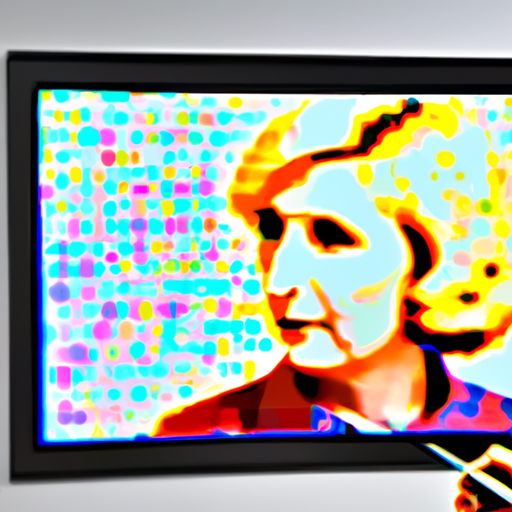
-
Table of Contents
From Pixels to Print: Preparing Graphics for Physical Media

With the rise of digital media, it’s easy to overlook the importance of preparing graphics for physical media. However, whether it’s for a brochure, billboard, or packaging, the process of translating digital designs into tangible prints requires careful consideration and attention to detail. In this article, we will explore the key steps and best practices involved in preparing graphics for physical media, and how to ensure the highest quality output.
The Importance of Preparing Graphics for Physical Media
While digital media has become the dominant platform for communication and advertising, physical media still holds a significant place in the marketing world. Brochures, business cards, billboards, and product packaging all rely on printed graphics to convey messages and capture attention. However, the transition from pixels to print is not always seamless, and without proper preparation, the final result may fall short of expectations.
One of the main challenges in preparing graphics for physical media is the difference in color representation between digital screens and printed materials. Monitors emit light, while printed materials reflect light, resulting in variations in color accuracy. Additionally, the resolution and file format requirements for print differ from those for digital media. These factors necessitate careful consideration and adjustments to ensure the best possible outcome.
Understanding Color Management
Color management is a crucial aspect of preparing graphics for physical media. It involves maintaining consistent and accurate colors across different devices and media types. Without proper color management, the colors in the final print may appear different from what was intended, leading to a loss of brand identity and impact.
One of the first steps in color management is calibrating your monitor. By using a color calibration tool, you can ensure that the colors displayed on your screen are as accurate as possible. This step is essential because if your monitor is not properly calibrated, the colors you see may not match the final printed result.
Another important consideration is the color space used in your design. RGB (Red, Green, Blue) is the color space used for digital media, while CMYK (Cyan, Magenta, Yellow, Black) is the color space used for print. Converting your design from RGB to CMYK is necessary to ensure accurate color representation in the final print. However, it’s important to note that some colors may not be achievable in CMYK due to the limitations of the printing process. Therefore, it’s crucial to review and adjust your design accordingly to avoid any unexpected color shifts.
Resolution and File Formats for Print
When preparing graphics for physical media, it’s essential to consider the resolution and file formats required for print. Unlike digital media, where images can be displayed at various resolutions without loss of quality, printed materials have a fixed resolution determined by the printing process.
The standard resolution for print is 300 dots per inch (dpi). This means that for every inch of printed material, there are 300 dots of ink. To ensure the best print quality, it’s important to design your graphics at the appropriate resolution. If your design contains low-resolution images or graphics, they may appear pixelated or blurry in the final print. Therefore, it’s crucial to use high-resolution images and graphics to achieve sharp and clear prints.
In addition to resolution, the file format you choose can also impact the quality of the final print. The most commonly used file formats for print are TIFF (Tagged Image File Format) and PDF (Portable Document Format). These formats preserve the quality of the images and allow for easy printing. When saving your design for print, it’s important to use the appropriate file format and ensure that all fonts and images are embedded or outlined to avoid any potential issues during the printing process.
Optimizing Design Elements for Print
Aside from color management, resolution, and file formats, there are other design elements that need to be optimized for print. These elements include typography, image placement, and bleed.
Typography plays a crucial role in print design. It’s important to choose fonts that are legible and appropriate for the intended medium. Some fonts may appear fine on a digital screen but may not translate well when printed. It’s also important to consider font sizes and line spacing to ensure readability, especially for small print materials like business cards.
Image placement is another important consideration. When designing for print, it’s crucial to ensure that images are placed correctly and do not get cut off or distorted during the printing process. It’s also important to maintain a suitable balance between images and text to create visually appealing designs.
Bleed is an essential aspect of print design that is often overlooked. Bleed refers to the area beyond the final trim size of the printed material. It allows for slight variations during the trimming process and ensures that there are no white borders or gaps around the edges of the design. Including a bleed area in your design is crucial to avoid any unwanted white spaces in the final print.
Case Studies and Statistics
Let’s take a look at a few case studies and statistics that highlight the importance of preparing graphics for physical media:
- A study conducted by the Direct Marketing Association found that direct mail campaigns have a response rate of 4.4% compared to email campaigns, which have a response rate of only 0.12%. This highlights the effectiveness of physical media in capturing attention and driving engagement.
- In a case study by a leading packaging design agency, they found that by optimizing the graphics and typography for print, a client’s product packaging saw a 20% increase in sales. This demonstrates the impact that well-prepared graphics can have on consumer perception and purchasing decisions.
- A survey conducted by a billboard advertising company revealed that 71% of respondents recalled seeing billboards in the past month, and 56% talked about a funny or interesting billboard they saw. This showcases the power of well-designed and eye-catching graphics in outdoor advertising.
Summary
Preparing graphics for physical media requires careful consideration and attention to detail. From color management to resolution and file formats, each step plays a crucial role in ensuring the highest quality output. By calibrating your monitor, converting colors to the appropriate color space, and using high-resolution images, you can achieve accurate and impactful prints. Optimizing design elements such as typography, image placement, and bleed further enhances the overall quality of the final print. The case studies and statistics mentioned highlight the importance of well-prepared graphics in capturing attention, driving engagement, and ultimately impacting consumer behavior. By following these best practices and incorporating the insights shared in this article, you can confidently prepare graphics for physical media and achieve outstanding results.
